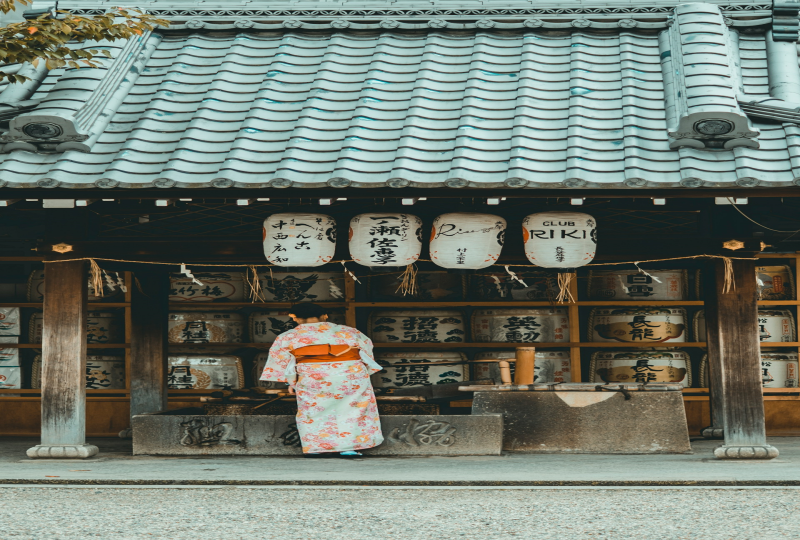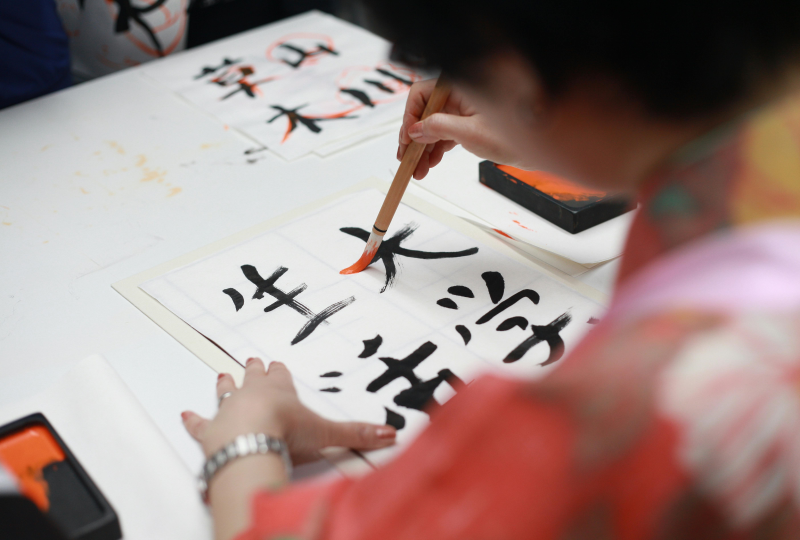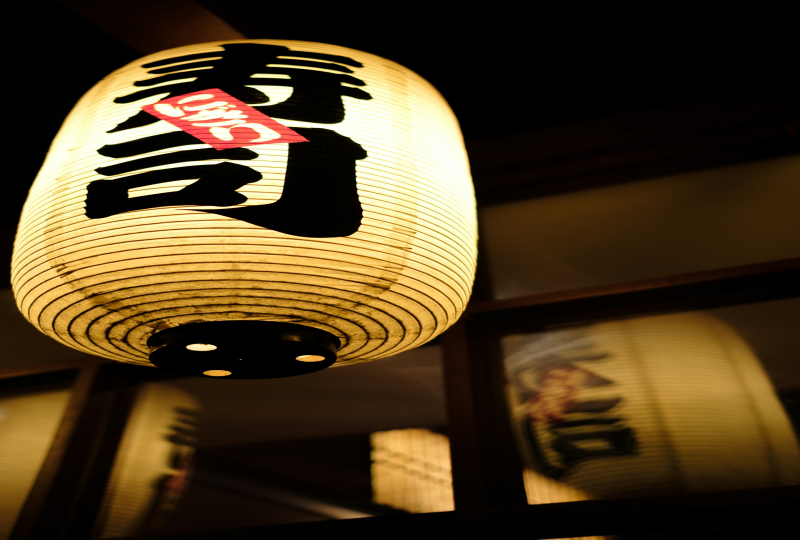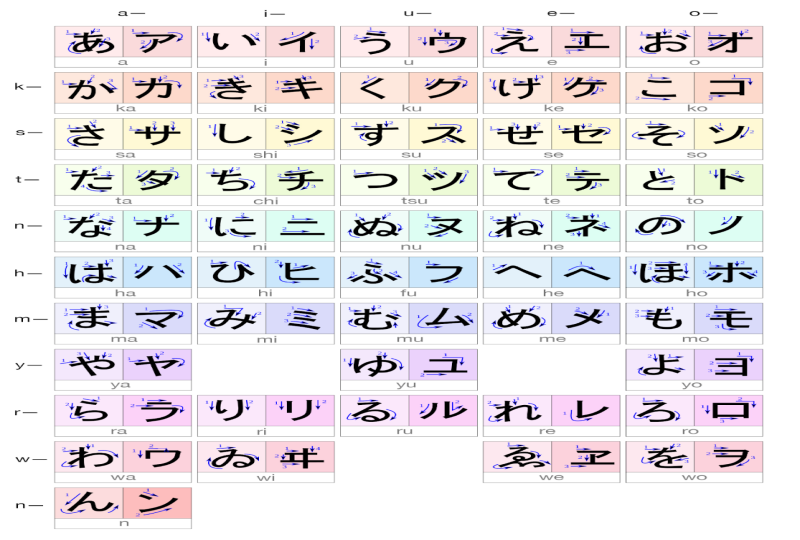Write Japanese Characters and Kana with Proper Stroke Order

When writing by hand, do you write the vertical line or the loop of the letter “D” first? What about the vertical lines or the horizontal line in the letter “H”? While I personally think it would be pretty odd to start with the horizontal line in “H,” it doesn’t matter all that much since English doesn’t have a prescripted stroke order. When you write Japanese characters, like kana, it’s a different story.
Unlike English, which you can write however you want, Japanese writing follows strict rules. In this article, we'll explore what stroke order is and why stroke order matters. You'll also learn how it works and the best ways to practice it with kana. I've written a separate article about stroke order for kanji that you can check out here.

What Is Stroke Order When You Write Japanese Characters?
In English, to write a lowercase “t,” I write a horizontal line from left to right, then a vertical line from up to down. However, someone else could write the horizontal line first if they wanted to, or even draw the lines from right to left or down to up. Not so in Japanese. In Japanese, the order and direction matter.
Each character in the Japanese alphabet, whether kana or kanji, is constructed with a specific sequence of strokes or lines. These strokes—horizontal, vertical, diagonal, and more—are supposed to be written in a precise way. This includes the direction of each stroke, its type, and the final number of strokes. This is a culturally significant tradition and is even considered an art form (calligraphy).
Why Does Stroke Order Matter?
Why is stroke order when learning hiragana katakana and kanji so important? Well, it comes down to how complicated kanji get. We’ll talk about kanji later, but be prepared—some of them consist of dozens of strokes and are often made up of multiple radicals (sort of like building blocks). The kanji for “twinkle” is a good example: 瞬. This kanji contains a lot of individual parts, including the characters for eye (目) and evening (夕).
When writing by hand, constructing the radicals in a specific order one at a time helps to produce neater and more aesthetically pleasing characters. There are a few other advantages to stroke order:
Consistent practice builds muscle memory, which helps with memorization.
Many Japanese writing recognition apps use stroke order as a critical part of their recognition process.
For kana, stroke order ensures your handwriting looks neat and help you get used to the concept overall. With all that in mind, let’s move on to the types of strokes involved in Japanese characters.
Write Japanese Characters with these Three Types of Strokes
In Japanese writing, the way we end a stroke defines the type of stroke. Each line can be finished with three distinct strokes: harai (sweep), hane (lift), or tome (stop). These seemingly subtle variations significantly affect the character’s appearance and contribute to its meaning in Japanese writing.
Harai: Extends the line with a gentle flourish. Just like a broom, these lines gradually taper to a point.
Hane: Finishes with a fun upward motion, giving it a lively and energetic touch. These lines are the most obvious, especially when you write using a pencil or pen.
Tome: This last one provides a firm, defined stop, precisely anchoring the line. You will see a pool of ink at the end of a “tome” line in calligraphy.

In general, Japanese letters:
Start from the top left corner and finish at the bottom right.
Horizontal lines go from left to right, while vertical ones go from up to down.
For example, look at the stroke order for き “ki” below.

Kana Stroke Order
The chart below shows stroke order for all the kana in the Japanese alphabet. You can ignore the katakana for now; just look at the hiragana (the odd-numbered columns) and their stroke orders.

How to Practice Stroke Order to Write Japanese Characters
To write Japanese characters and kana, you need to do more than just copy them down–you’ve got to pay attention to stroke order. A lot of kids use tracing and graph paper to work on their handwriting at first; there are templates out there that indicate stroke order for each character made for this purpose. In fact, I remember doing this when I practiced calligraphy as a child. Tracing allows you to physically follow the correct path of each stroke, gradually ingraining the movements into your muscle memory. This “hands-on” approach prevents you from accidentally developing bad habits by repeatedly practicing incorrect strokes.
Learning to write Japanese characters and kana isn’t easy, but the rules of stroke order are fairly simple. Keep them in mind, and your journey to write Japanese characters will go smoothly. But what about speaking Japanese?

Mastering the Art of Japanese Writing: From Stroke to Sound via Speechling
Learning how to write Japanese characters properly isn't just about neat handwriting. It's about respecting tradition, appreciating the art of calligraphy, and making learning all these darn characters a little easier. Whether you're writing kanji or kana, each stroke you make contributes to the character's clarity.
However, when you learn to write Japanese characters, there is another important aspect that is often overlooked: pronunciation! Pronouncing while you draw not only strengthens your connection to the Japanese characters, but also helps to reinforce their proper construction.
Using an app such as Speechling, you have access to free language coaching on your pronunciation combined with lots of fun exercises. Its curriculum has thousands (yes, thousands!) of sentences designed just for you, whether you're just starting out or already know some basics. Even if you don't sound like a native speaker yet, Speechling can help you improve. So, whether you're tracing lines on paper or busting out the calligraphy brushes, keep in mind that Speechling is there to walk with you every step of learning to speak what you’ve written.
